First view of Kantishna from
the bus. The Kantishna District was a mining community formed during
the early 1900's. Now primarily a destination for guests visiting the
privately owned Kantishna lodges and serves as an access point for backcountry
campers. Kantishna is truly the "End of the Road". |
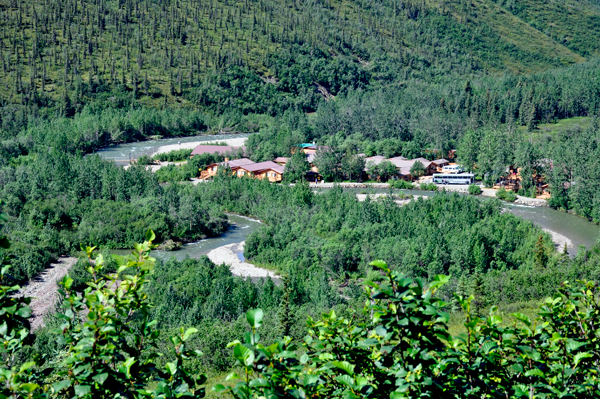
|
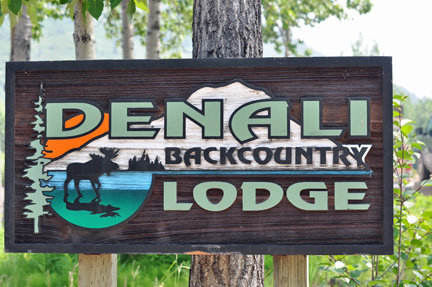
|
The Kantishna Experience includes
a lunch, snack and beverages. After lunch, everyone explored the area
on their own.
The Kantishna River is a 108-mile tributary of the
Tanana River in the U.S. state of Alaska. Formed by the confluence of
the McKinley River with Birch Creek in Denali National Park and Preserve,
it drains part of the north slope of the Alaska Range. The direction
of flow is generally north-northeast. The Toklat River is a major tributary. |
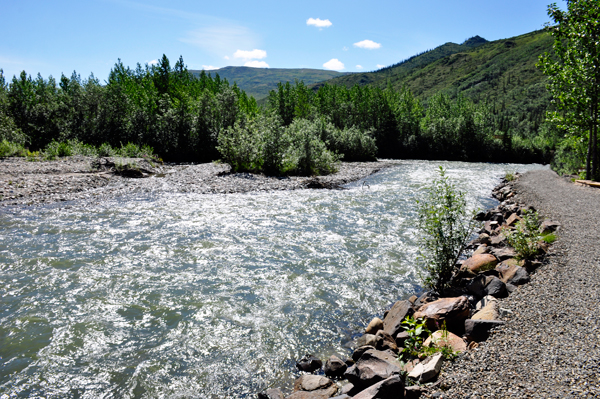
|
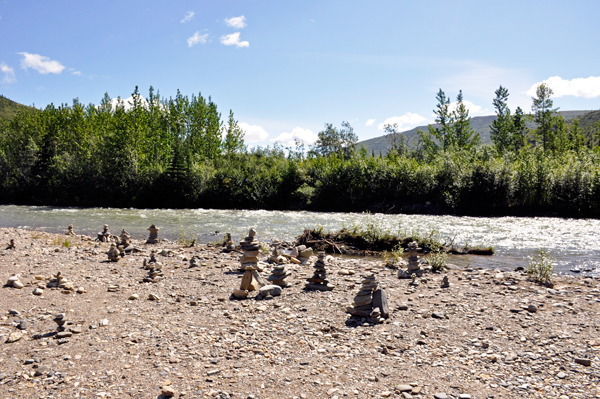
|
Below: Karen Duquette's sister
Ilse Blahak does not like swinging bridges. But she braved it anyway.
|
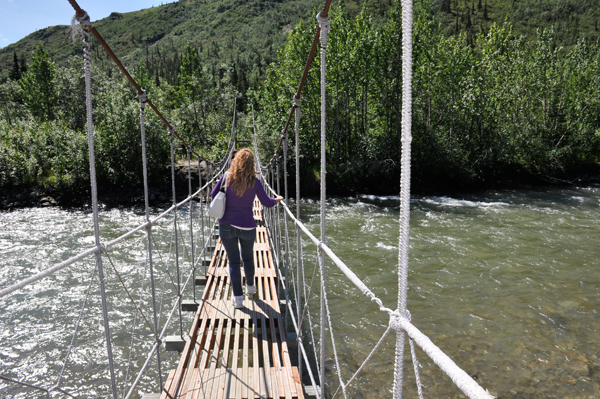
|
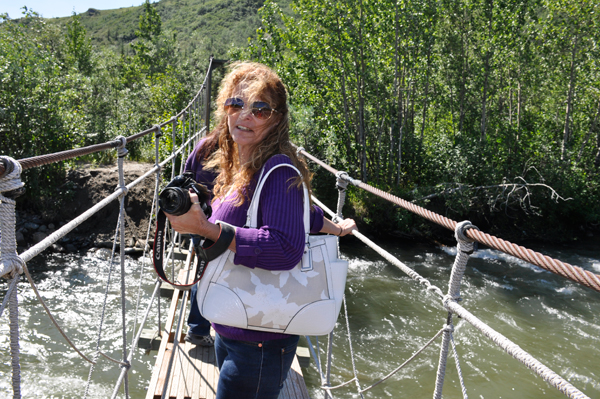
|
Below: Lee
Duquette loves swinging bridges, especially if he can cause them to
move a lot. |
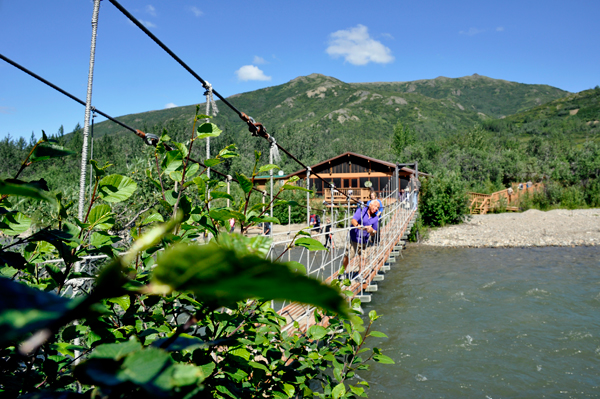
|
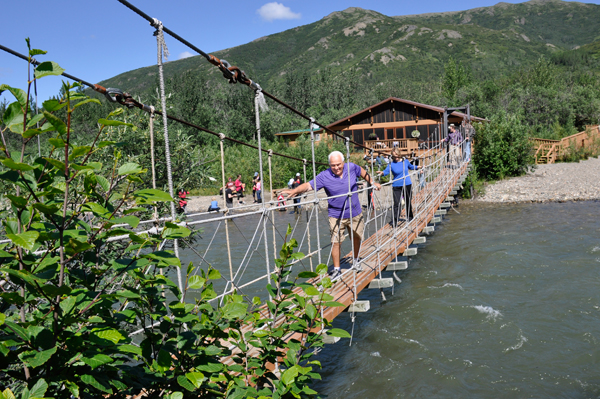
|
Below: Ilse Blahak got braver
and went on the bridge before Lee Duquette was off of the bridge. |
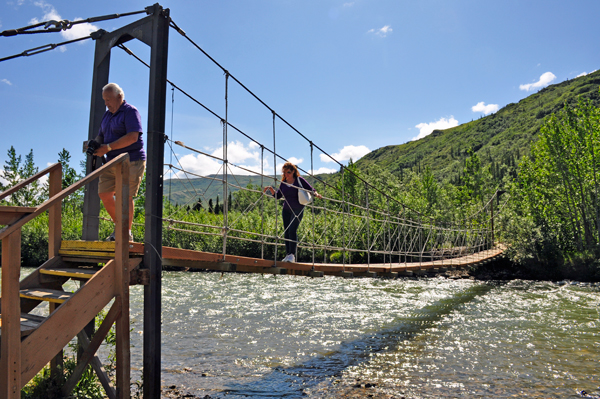
|
Below: After crossing the
swinging bridge and walking a bit, the two RV Gypsies looked back at
the lodge and the bridge. |
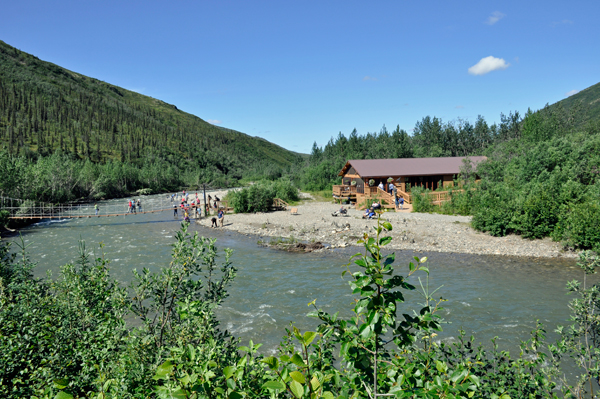
|
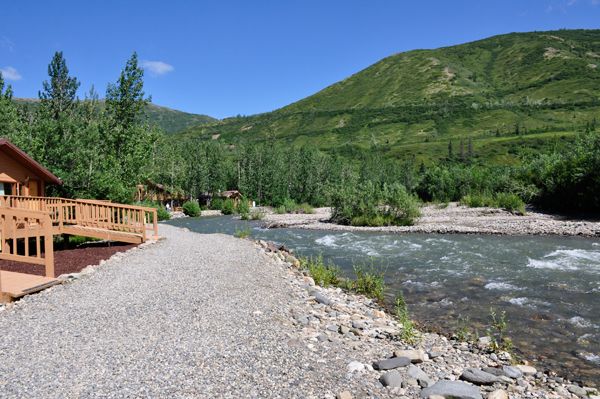
|
Below: Lee Duquette doing
his thing in The Meditation Peace Garden. |
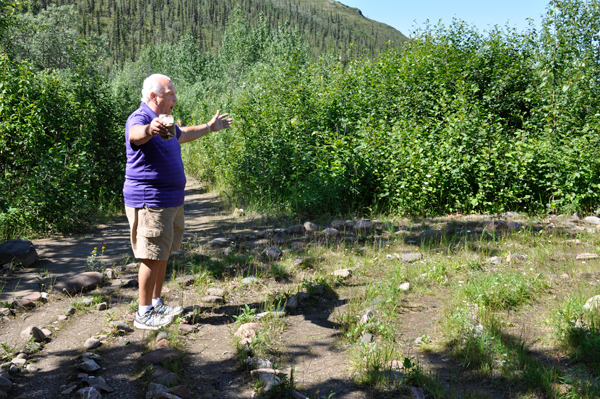 |
Below: John built a cairn,
a human-made pile or stack of stones. The word cairn
comes from the Scottish Gaelic: càrn
(plural càirn). Cairns
have been and are used for a broad variety of purposes, from pre-historic
times up to the present. |
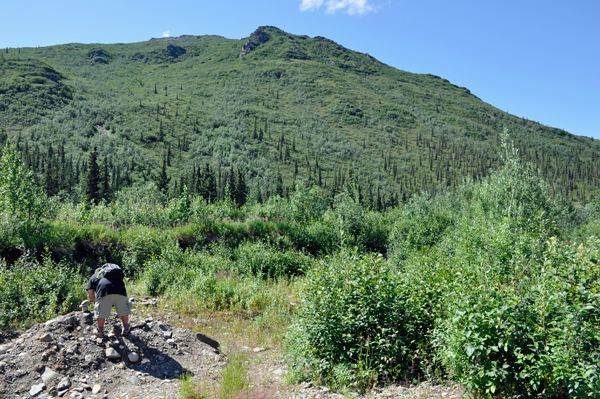
|
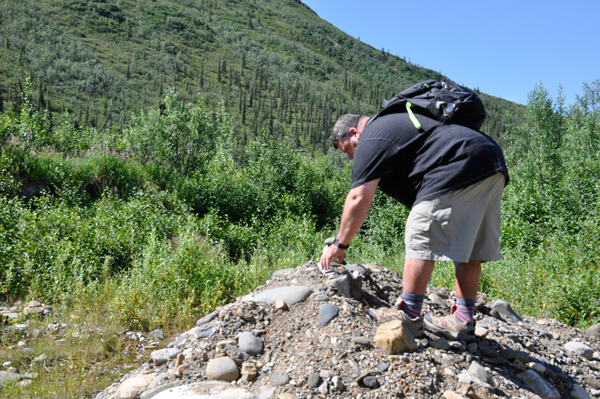
|
Cairns are often erected as
landmarks, a use they have had since ancient times. However, since prehistory,
they have also been built and used as burial monuments; for defense
and hunting; for ceremonial purposes, sometimes relating to astronomy;
to locate buried items, such as caches of food or objects; and to mark
trails, among other purposes.
Cairns are used as trail markers in many parts of the world and vary
in size. Cairns may be painted or otherwise decorated. |
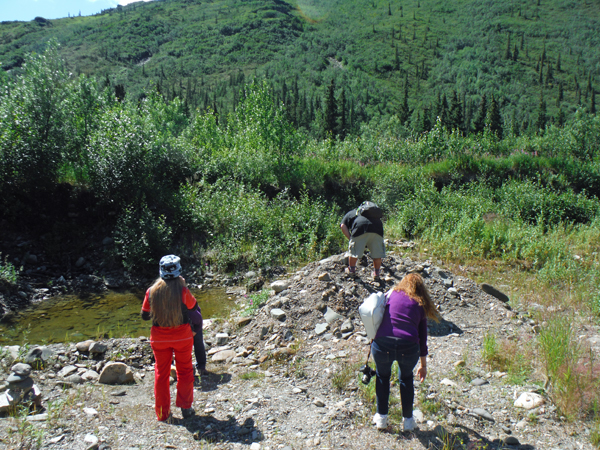 |
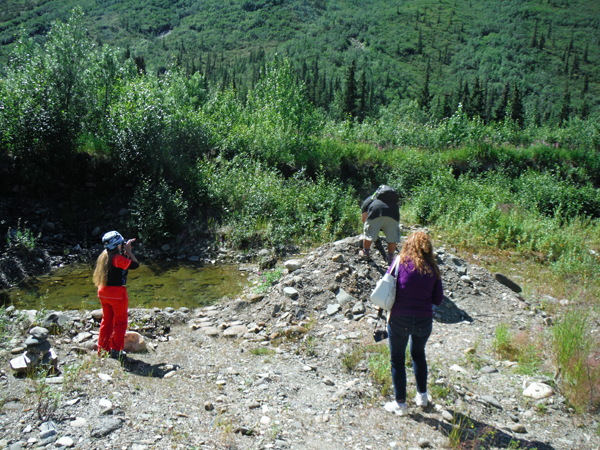 |
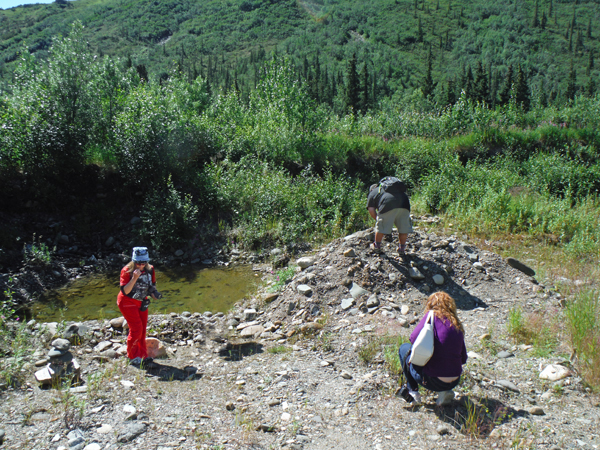
|
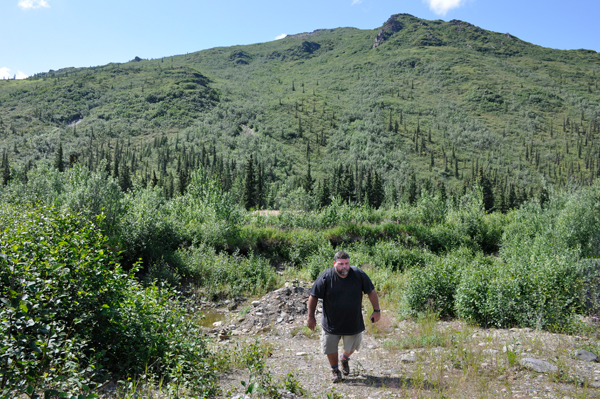
|
Below: The two RV Gypsies
and family explored the area at Kantishna. |
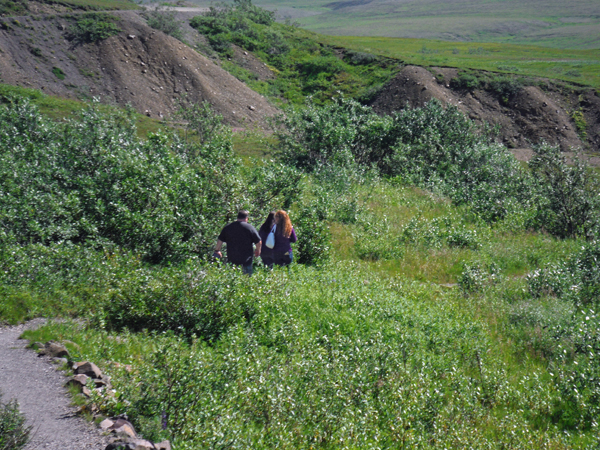
|
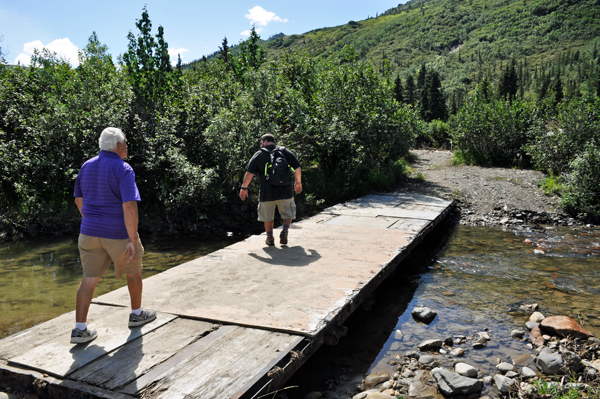 |
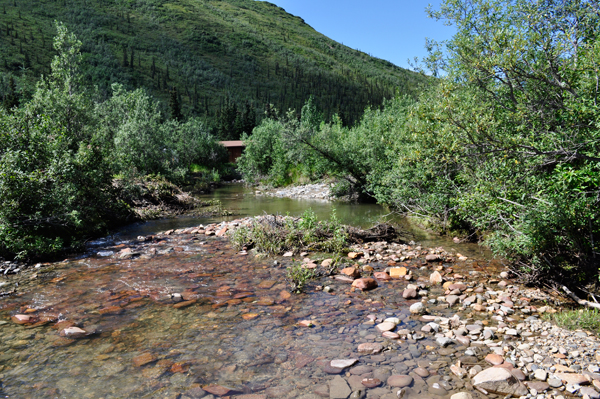
|
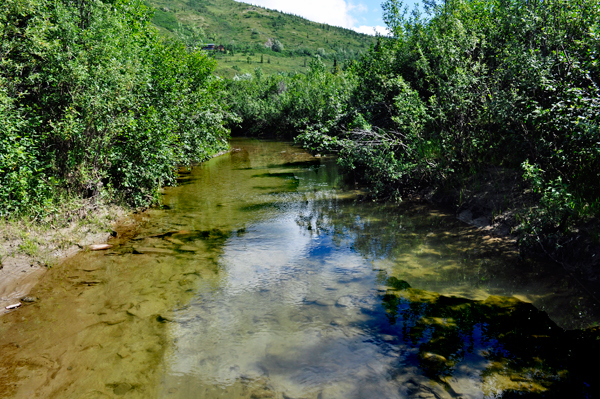
|
Below: Looking back at the
swinging bridge. |
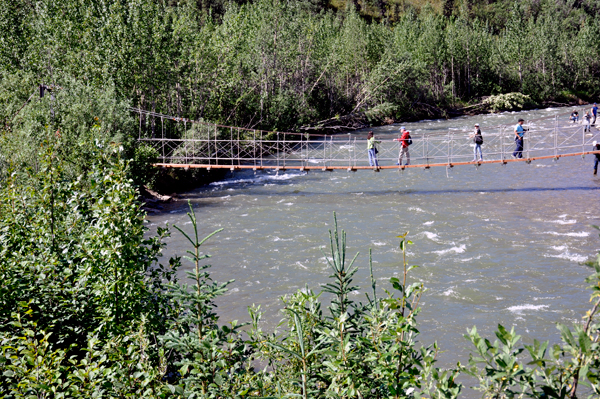
|
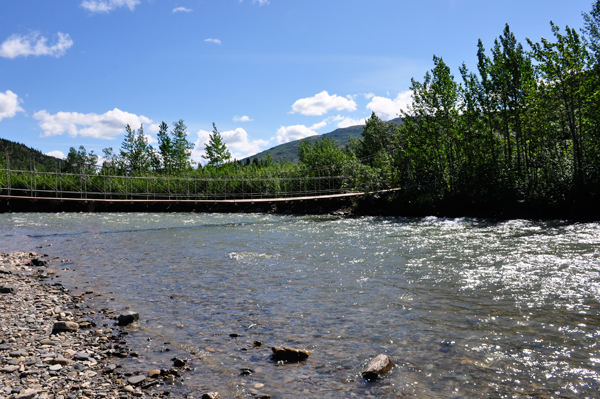
|
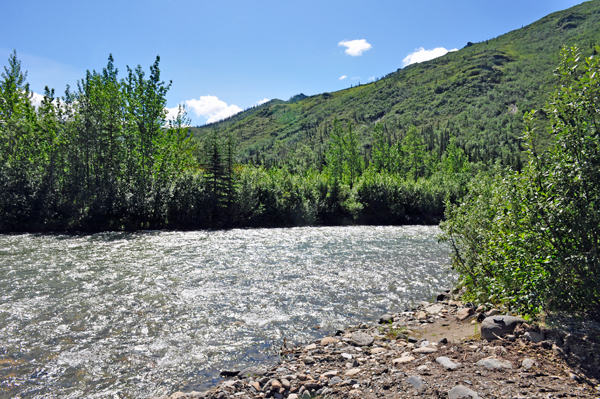
|
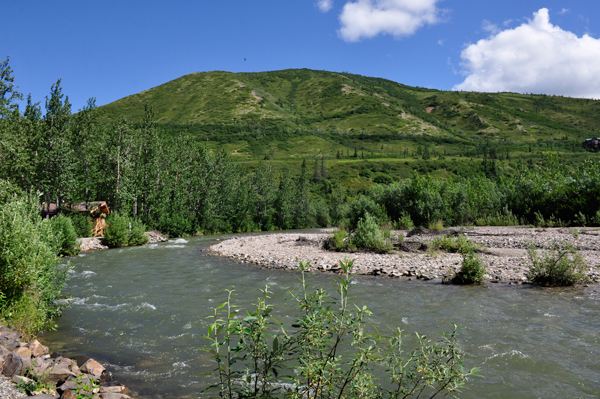
|





















































